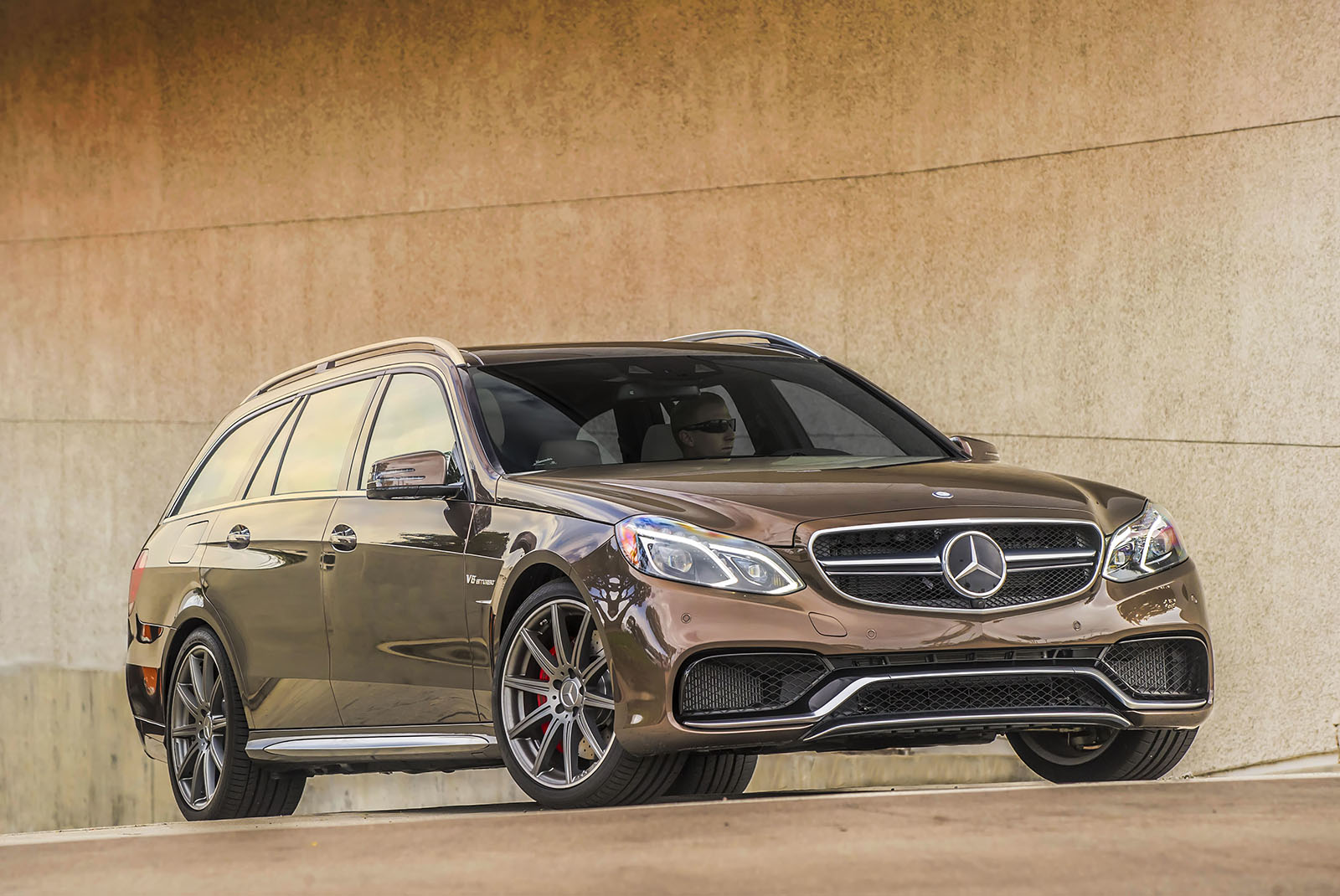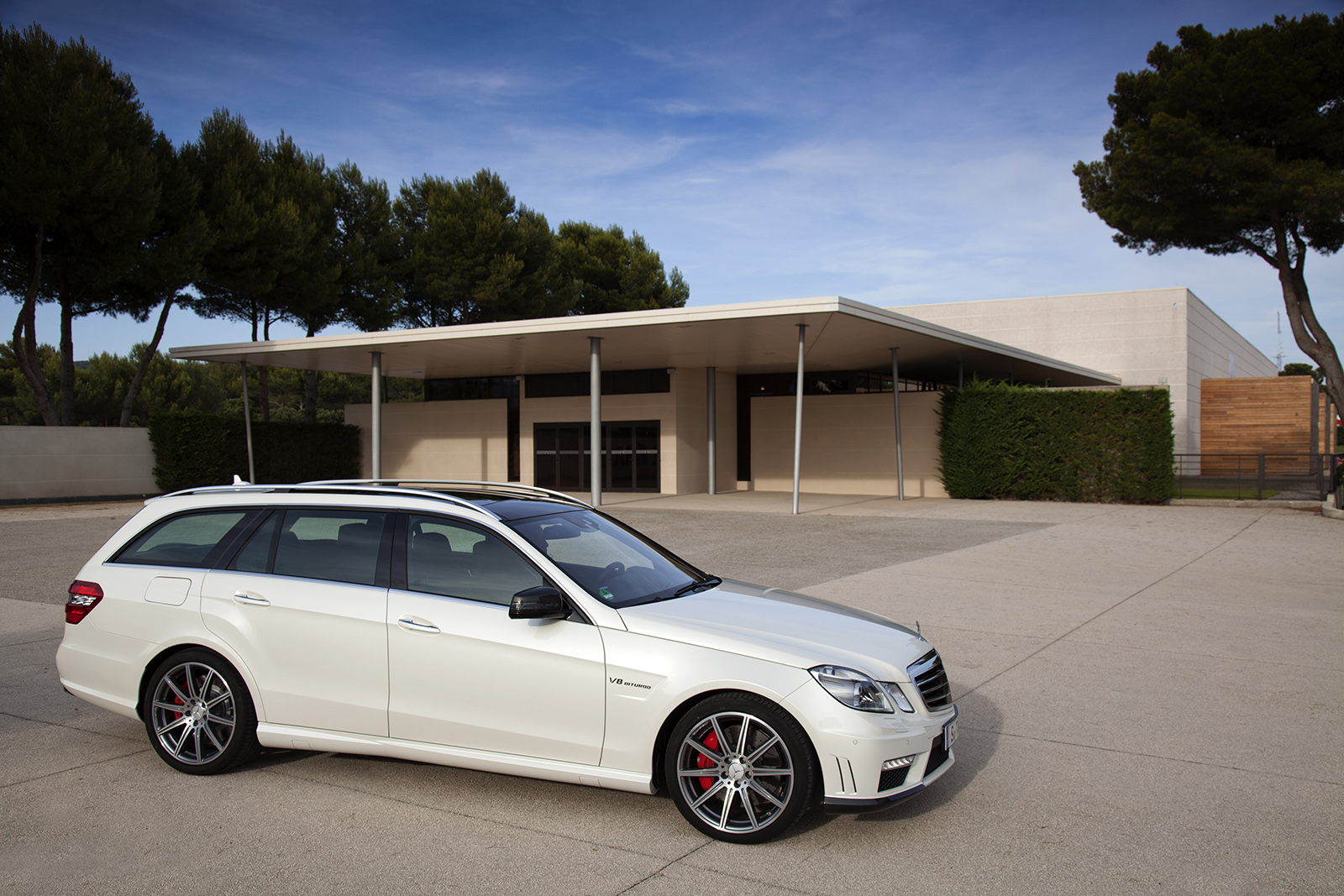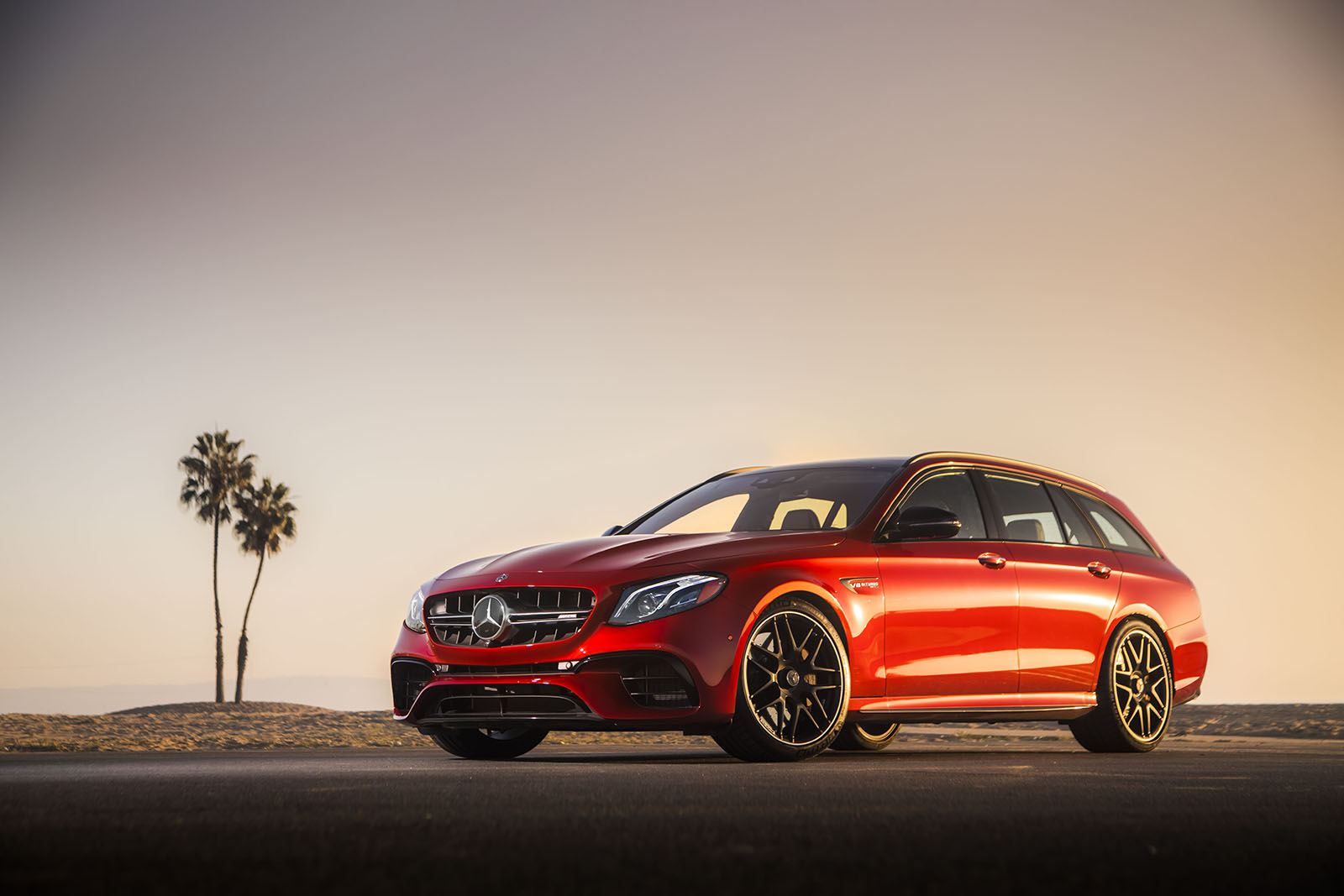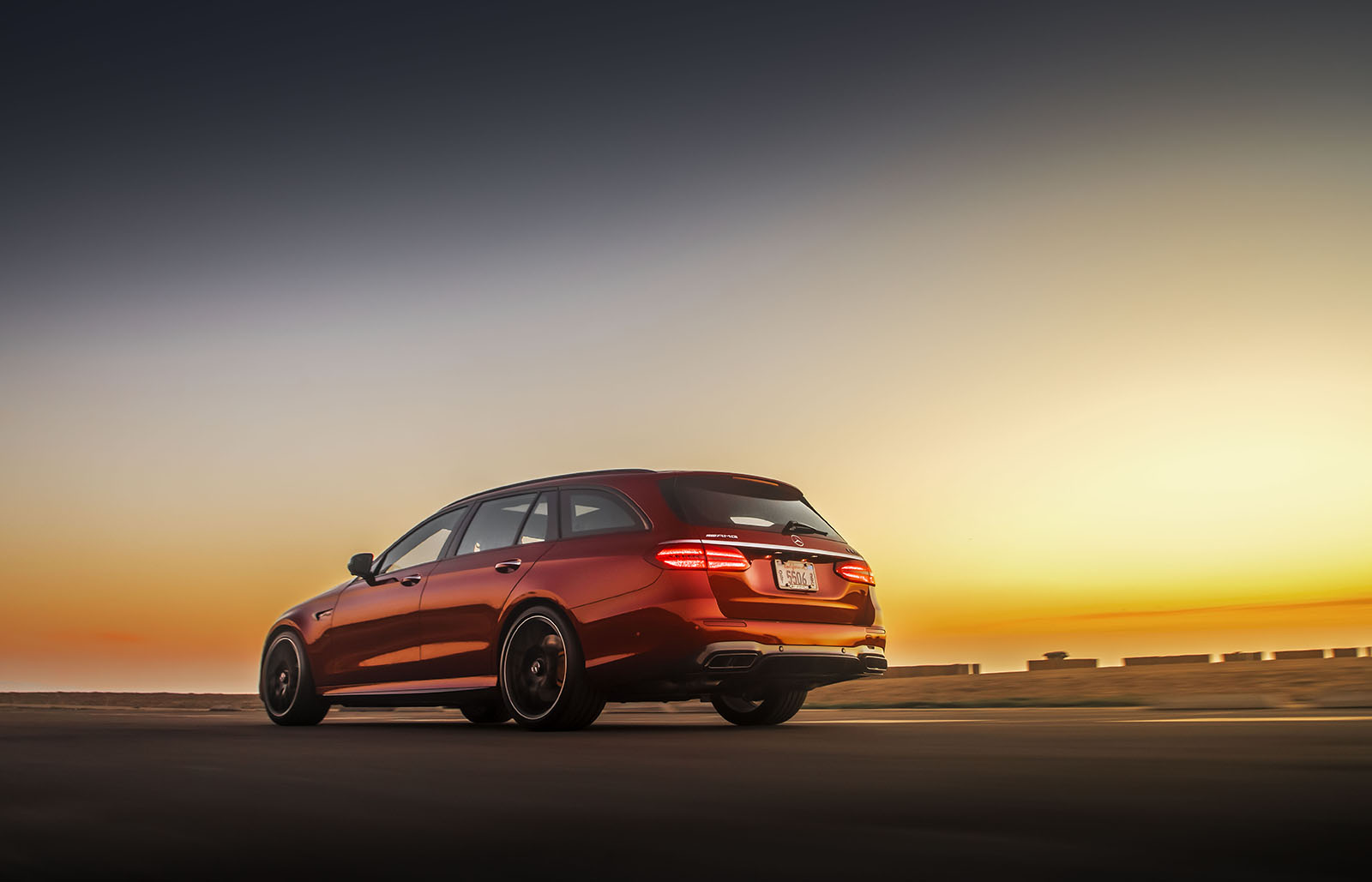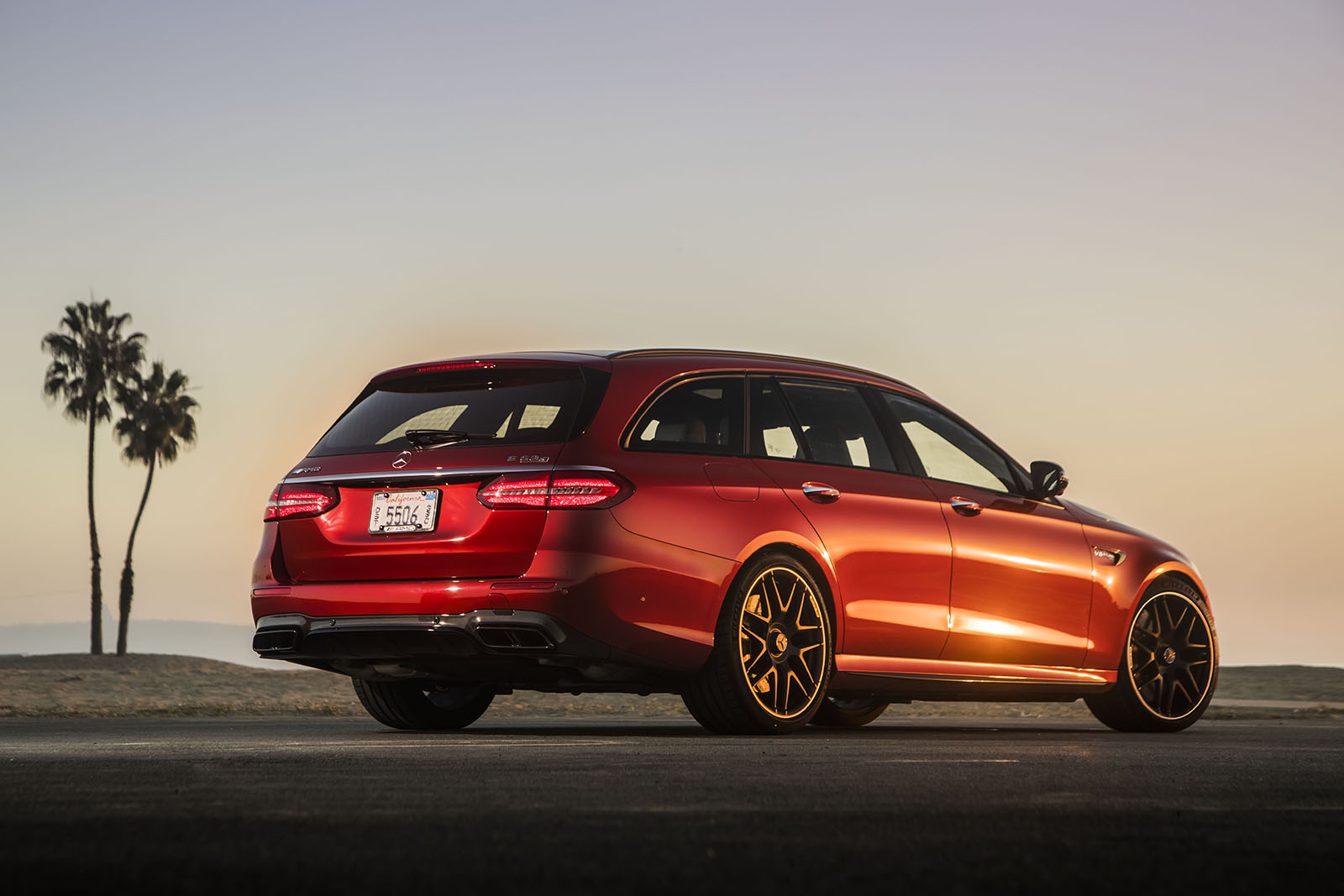
Consider the latest and greatest — the 2018 Mercedes-AMG E63 S wagon. The E63 S wagon is one of the very few high-performance wagon options made available here in the U.S. While most other automakers keeps theirs confined to select markets in Europe and Asia (where they’re much more popular), Mercedes-Benz took up the slack by catering to the demand for everyone who wanted a hot luxo-wagon here in the U.S. of A.
Truth be told however, the Mercedes-AMG E63 S wagon isn’t the first long roof of its kind. In fact, Mercedes-Benz is one of the few European automakers that remains faithful to selling estates here in America, particularly fast ones. And it technically all started with the W124-based AMG Hammer from the 1980s.
1987 Mercedes-Benz AMG Hammer Wagon

What started in life as a fairly humble diesel-powered T124 (T for Touring, sub-divided under W124 chassis), the 300TD became one of the first and only beginnings for the E-Class AMG wagon. A wealthy Canadian enthusiast called up AMG at the time to build a one-off car for his wife. During the 1980s, AMG was still an independent firm, who specialized in accessorizing and upgrading Mercedes-Benz models for road-use and in motor sports. So when the AMG Hammer was born, it predated the official marriage between the two companies.
Featured previously on Petrolicious, this 1987 AMG Hammer wagon rang up the invoice to around $190,000 in 1980’s money, and it’s believed to be the only one of its kind. AMG removed the diesel powerplant and completely converted it to house their modified 375-horsepower 6.0-liter AMG V8. They then modified the transmission, suspension, and steering. The result was nothing like anyone had ever seen before, setting the stage of inspiration for all E-Class AMG wagons to follow.
2005 Mercedes-Benz E55 AMG Wagon

Sadly, the North American market missed out on the W210-based AMG wagon to much disappointment. But the company thankfully acknowledged the demand and brought the E-Class AMG wagon stateside for a brief run. Reintroduced in 2005, based off of the W211 generation of the time, it arrived as the E55, meaning it was essentilly a wagon version of the supercharged E55 sedan.
The engine was a 5.5-liter blown V8, serving up 469 hp and 516 pound-feet of torque for a 0 to 60 mph time of just 4.6 seconds. Top speed was limited electronically to 155 mph. Only 125 E55 AMG wagons came stateside between 2005 and 2006 for an asking price of $82,600.
2007 Mercedes-Benz E63 AMG Wagon

The saga of the W211-based E-Class AMG wagon didn’t end with the E55. With the introduction of AMG’s latest V8 at the time — the naturally-aspirated 6.2-liter V8 — came the introduction of the E63 AMG wagon. Following the same principle, it was an E63 sedan with an elongated roof. Power jumped from 469 hp to 507 hp, through torque output fell to 465 lb-ft, which still isn’t terribly modest, despite the changeover from forced induction to natural aspiration.
Nonetheless, the extra power proved to make a difference, dropping the 0 to 60 mph time to just 4.0 seconds. While its top run was still limited electronically to 155 mph, it probably required less time and effort to get there.
In 2007, 153 E63 wagons came to the U.S. by special order for a price of $85,400.
2012 Mercedes-Benz E63 S AMG 4Matic Wagon
The E-Class AMG wagon endured another hiatus from 2009 until 2012. By then, the next-generation W212 E-Class was already being sold and thus, the next E-Class AMG wagon simply followed in the same footsteps. This time around, Mercedes-AMG returned to a 5.5-liter V8, but with two turbochargers instead of a supercharger.
The result was 518 hp and 516 lb-ft of twist, while the optional AMG Performance Package hiked these figures to 550 hp and 590 lb-ft. 60 mph happened in just 4.1 seconds, however media outlets returned times as low as 3.9 seconds. In 2014, the E63 S wagon came to fruition with a host of new updates, including a changeover to all-wheel drive for the first time ever after being rear-wheel driven since conception. Power hiked to 577 horses and 590 lb-ft of twist, resulting in a lower 0 to 60 mph time of 3.6 seconds.
From 2012 to 2013, the last of the rear-wheel drive E-Class AMG wagons sold 209 times in the states for a starting price of around $91,500. Upon being updated, price climbed to $102,370 with 783 selling from 2014 to 2016, making it the most popular E-Class AMG wagon to date in the U.S.
2018 Mercedes-AMG E63 S Wagon
The latest E-Class AMG wagon continues the tradition. But this time, it breaks the 600-hp barrier with an output totaling 603 hpand 627 lb-ft from its AMG-tuned 4.0-liter biturbo V8. Paired with a nine-speed AMG automatic, the E63 S wagon can catapult five people and all of their things to 60 mph in just 3.4 seconds.
